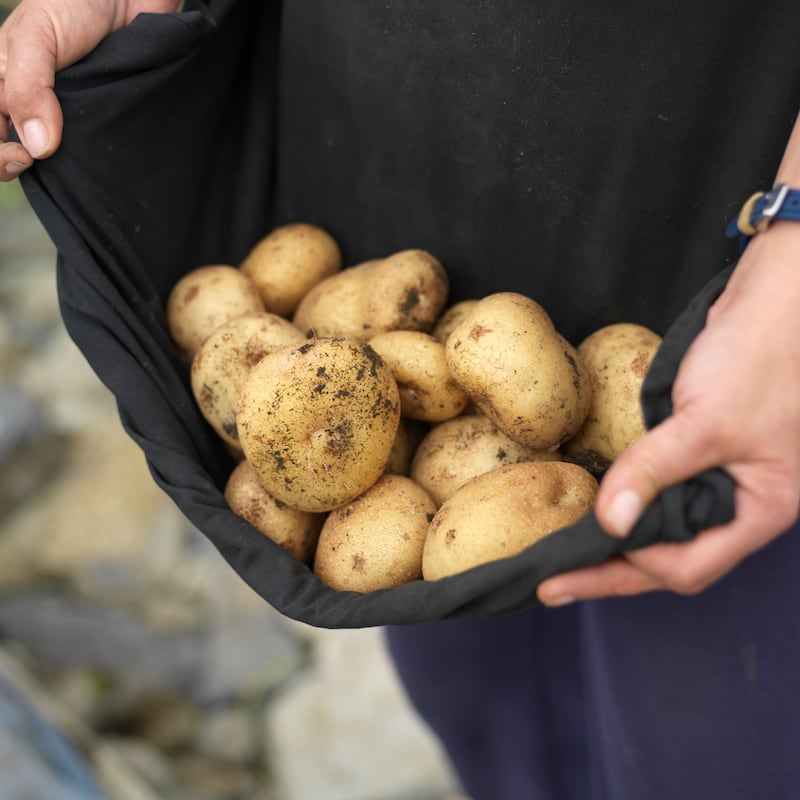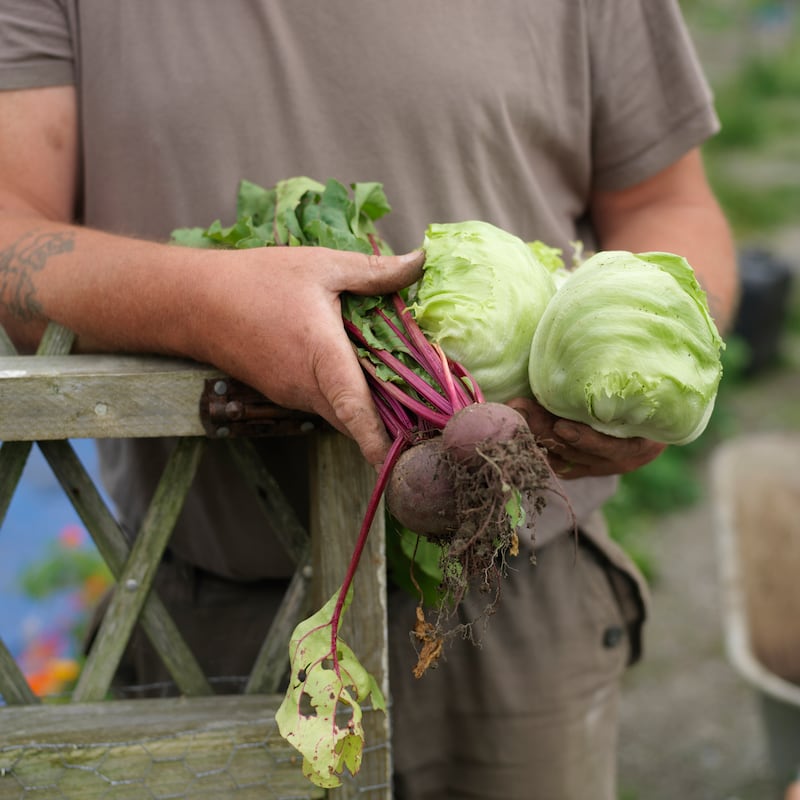So how are your potato plants doing? That basil you sowed back in the darkest days of the lockdown when it felt like the beginning of the end of the world? Is that packet of sweetcorn seed ordered on a whim (the lockdown’s surprising best-seller) still lost somewhere beneath the teetering, pandemic-style pile of books, magazines and paperwork occupying a corner of the sofa? What about that small sea of tomato plants whose successful germination felt like a sort of modern day miracle? Absolutely amazing, isn’t it, just quite how many seedlings you can get from one single packet . . . just amazing.
Speaking of which, were you, ahem, a little taken aback by the sudden weighty sense of parental responsibility you felt – being the person who brought them into this world - to ensure that all 75 went to a good home? Or did you (please tell me you didn’t) decide to keep every last single one . . .
If you’re a newcomer to the strangely addictive, occasionally frustrating but hugely rewarding world of kitchen gardening, then you may be feeling like you’ve just stepped off a very high diving board. This is entirely normal. Over the last few months you will also almost certainly have made the same beginners’ mistakes that every (and I do mean every) new gardener makes.
For example, you probably ordered too much seed, or sowed too much seed, or sowed it at the wrong time. Or you sowed it too densely or too deeply, or forgot to water it enough or didn’t give the emerging seedlings sufficient daylight so they grew weak and spindly. Or you watered some of them so very, very, very generously that they rotted away like sickly consumptives quietly succumbing to the horticultural equivalent of being submerged in a bath of muddy, icy water for several weeks. This is entirely normal.
By now you may be also the proud owner of several pots of mystery seedlings, their identities unknown, their labels lost many weeks ago. Or perhaps they were never labelled because, after all, back in the darkest, deepest days of full lockdown, it wasn’t exactly as if plant labels were all that easy to come by and anyway you were pretty sure – remember? – that you’d remember their names.
You’re also wondering what happened to the peas you diligently sowed outdoors and which for some mysterious reason never emerged above ground (my guess is that mice stole them, or that slugs ate the young shoots as they emerged, or that – being lovers of a cool moist soil – they were victims of drought). Again, I promise you, all of this is entirely normal.
It’s also not unlikely that you stubbornly resisted those preposterous textbook recommendations to thin out your seedlings – an act that felt akin to murdering newborns – and are now wondering why your radishes never plumped up and your beetroot plants look so weak and spindly. Similarly, it’s entirely possible that every sunny windowsill in your home is filled with leggy tomato plants jostling for light while you’re simultaneously wondering how to squeeze 10 courgette plants, several dozen sprouting broccoli plants, a platoon of sweetcorn and a small army of runner beans into your already very-full garden. Meanwhile, you’re coming to the reluctant realisation that there is only so much lettuce that one can humanly eat before beginning to feel like a rabbit.

On the plus side, you’ve discovered you are surprisingly capable of growing quite a lot of your own food from scratch and that there is a very special magic that comes with eating a handful of scarlet radishes pulled straight from the soil, savouring the very first homegrown potatoes or relishing the flavour and freshness of homegrown herbs. In doing so, you’ve started something that will forever change your relationship with food, with the natural world and with the planet.
As for your mistakes, that’s all part of the process of becoming a gardener. So don’t forget them but learn from them. With that in mind, here are ten useful tips.
1 You'll never have enough space and time to grow everything. Instead prioritise the fruit, herbs and vegetables that you love to eat and that are productive but difficult and/or expensive to buy and/or whose flavour is hugely superior when homegrown.
2 Start keeping a garden diary to record what, when and where you sowed and planted as well as the first and last frost dates in your garden. The latter will have a very significant bearing on the timing and success of your crops (midland and upland areas are typically the coldest while coastal areas are typically the mildest but the windiest). By recording different varieties as well as the different seed suppliers, you'll quickly learn which are the best suited to your garden as well as the most reliable. Also record the parts of your garden or allotment that are the sunniest and most sheltered, that are a frost pocket or that need some form of shelter to protect vulnerable young plants from strong winds.
3 Growing conditions can vary hugely throughout the season and from year to year so if something didn't work well the first time, don't be afraid to give it another go. There's still time (but hurry) to sow oriental salad leaves, lettuce, Florence fennel and scallions (under cover for transplanting outdoors) and to directly sow turnip, radish, sprouting broccoli and annual spinach. This is also a good time also plant out leeks, kale, lettuce, chard, courgettes, sweetcorn, French beans, runner beans, squash, pumpkins and Brussels sprouts.
4 Never be too embarrassed to ask for help. Experienced kitchen gardeners are a generous, knowledgeable lot that are happy to share their wisdom as well as their plants. Many are also part of local gardening groups swapping useful tips and advice (see giy.ie and cgireland.org).

5 Healthy, fertile soil is essential for a properly productive kitchen garden. Regular top-up mulches of homemade garden compost, well-rotted manure, powdered seaweed and green manures plus innovative organic products such as Soil Renew, biochar, Hexafly and the use of innovative techniques such as RCW (rameal chopped wood; see my column on this) are all great ways to nourish soil health and to help it become more resilient to extremes of weather including drought and flooding. See soilrenew.ie; probiocarbon.ie; biocharireland.com; hexafly.com.
6 Avoid sudden gluts of fast-growing crops such as lettuce, turnips, scallions, radishes and Florence fennel by successionally sowing/planting small quantities of seed. Unless you dearly love courgettes and sprouting broccoli, three to four plants is more than ample for a family.
7 Be realistic. Heat loving crops will never flourish in this country unless you can give them an exceptionally warm, sheltered spot so if your heart is set on growing lots of tomatoes, peppers, cucumbers, aubergines etc, then consider investing in a polytunnel or a glasshouse (see cwp.ie and polydome.ie).
8 This spring's prolonged drought dramatically slowed or even stopped growth and has also led to a hosepipe ban. So if you haven't already installed a couple of rain harvesting barrels, now's the time.
9 There's nothing more frustrating than losing precious young seedlings or transplants to slugs, snails, mice, insects or birds so take timely, effective but planet-friendly precautions in the form of netting, slug-bait (the organically-acceptable kind containing ferrous phosphate) and Bionet (fruithillfarm.com). Raising plants in modules before transplanting them into their final planting position is another good way to protect them from mice and slugs.
10 Tiny weed seedlings will very quickly become large plants that starve your crops of light, water and nutrients while offering safe refuge for garden pests and diseases. Regular once-a-week hoeing (ideally on a sunny day, using an oscillating hoe) is an effective and very time-efficient way to keep them under control.
Mapping communal gardens
Community Gardens Ireland is running a fantastic competition to encourage the country's community gardens, allotment groups and any residents associations with communal food growing areas to sign up to its newly updated interactive map (see cgireland.org via the online membership form) with a wide range of great prizes up for grabs. Membership is free while the aim of the interactive online map is to make it easy for new kitchen gardeners to find food-growing projects in their area.













